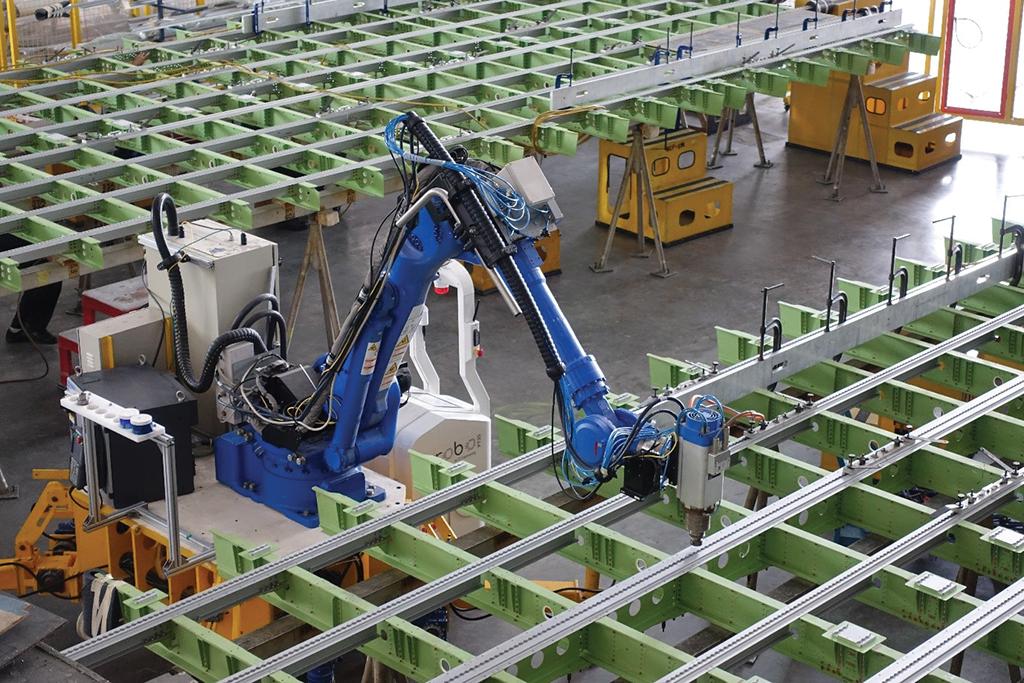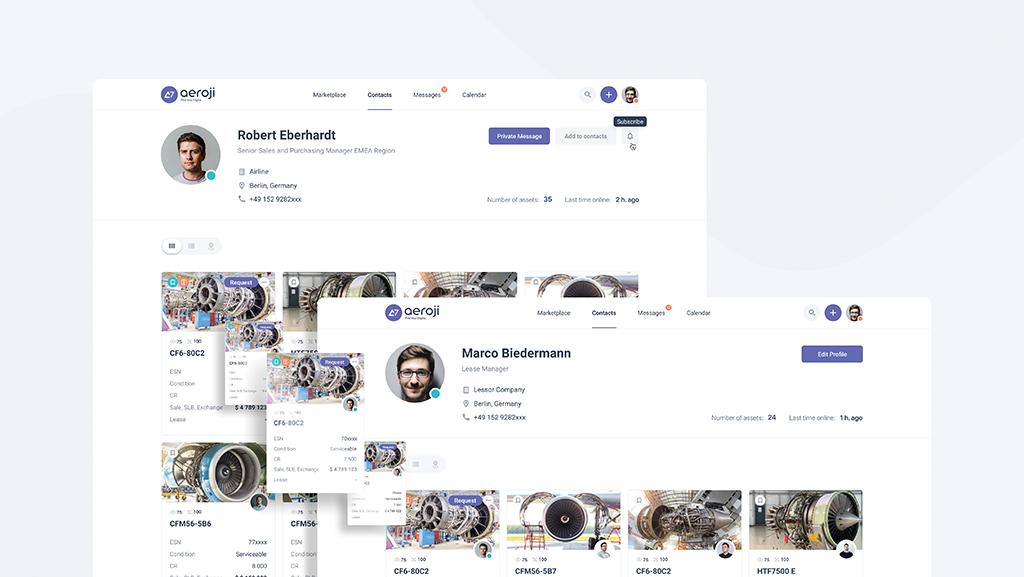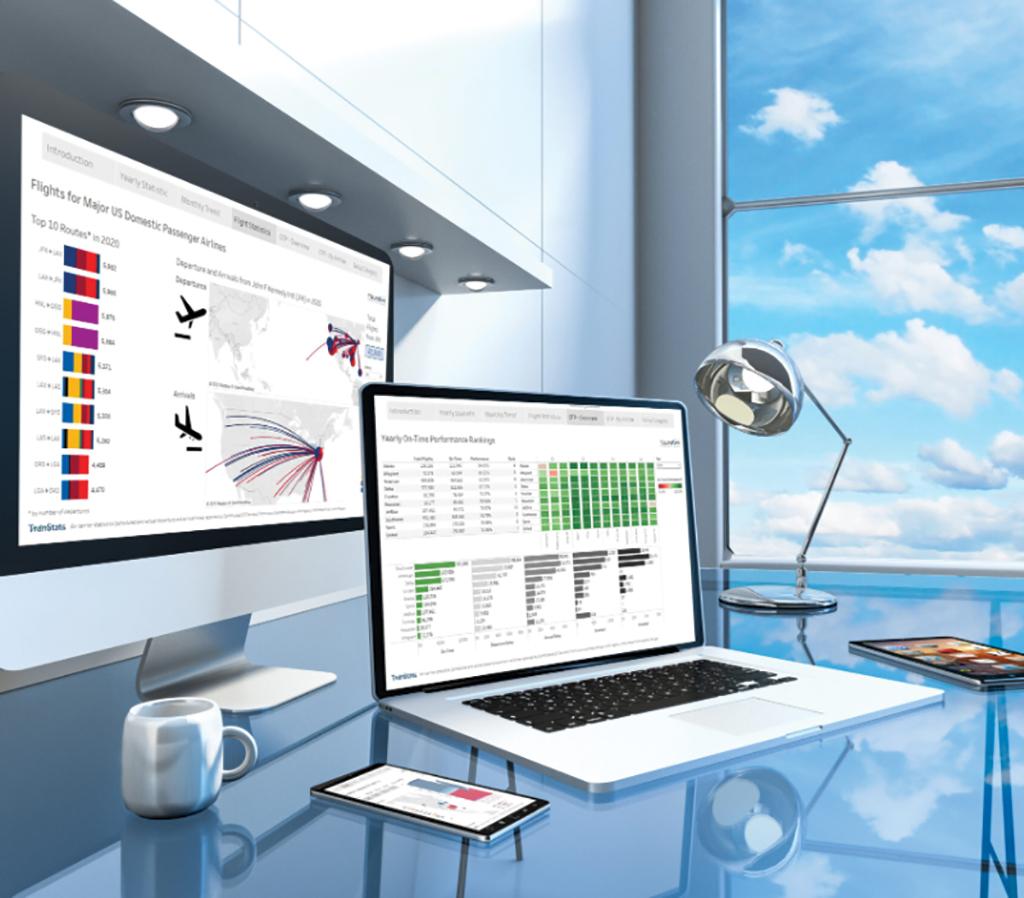
Amid the COVID-19 crisis and its impact on aviation, some clear trends have gone relatively unnoticed—for example, the relentless expansion of data, algorithms and the virtual world over ever-broader regions of the aviation aftermarket. Digitalization is steadily changing everything, from the ways maintenance is planned and parts secured to documentation, execution and turning of wrenches in hangars.
Adapting to this digital world is a big gulp, especially for smaller MRO providers. But adaptation ultimately benefits everybody by making repairs both safer and more efficient. The virtual world is changing, or soon will change, the “real” world of aircraft maintenance.
Start with the basics: If data is dirty or missing, apps do not work. Tsunami Tsolutions focuses on data preparation, according to Chief Data Scientist Neil Fisk. Using data-prep software Alteryx alongside its own expertise, Tsunami cleans up data such as hours, cycles, OEM information on parts, sensor feeds and other essentials. The company also does some data analysis, especially on engines.

Fisk argues many airlines rush into predictive maintenance, artificial intelligence (AI) and machine learning before “they get their data house in order.” Tsunami, he says, fixes that. For instance, it frequently cleans data for cutover to new enterprise resource planning (ERP) systems.
Tsunami is now moving into airframe data and will deploy Tableau software to visualize the cleaned-up digits. Fisk says Tsunami can work for MROs as well as the airline and military customers it has so far supported.
ERP or maintenance execution systems are also basic: Most airlines or major MROs have one. But leading ERP providers are constantly adding capabilities that make managing and planning maintenance smarter. The systems also make it easier to change MRO procedures and more feasible to connect to the wider aftermarket.
For example, IFS, which offers Maintenix for airlines and Applications 10 for MROs, plans to deploy five new capabilities, according to Vice President for Aerospace and Defense Rob Mather.
An upgraded technical content manager will bring data such as work instructions and maintenance programs to line mechanics in addition to already available illustrated parts catalog revisions. IFS’ new cloud platform will use augmented reality (AR) to support remote assistance and remote inspections.
Over the next two years, IFS will renovate mobile solutions with new offline optimized workflows, and it will upgrade maintenance planning, scheduling and optimization tools to handle multi-horizon planning. Last, its Internet of Things Connector and machine learning tools will be available to airlines and MROs to improve predictive maintenance.
Swiss-AS will also continue to introduce more automation options into its AMOS MRO software over the next two years, building on functions that are already available and identifying more areas in which AMOS can support engineers and mechanics in decision-making, according to product manager Joao Jorge. “Assigning staff to automated work packages, ensuring that all planned tasks are covered by the assigned technicians’ qualifications, for example, are areas which will delight the AMOS community,” he says.
The software provider says its new technology platform, Google Flutter, is an open-source user interface software development kit that will enable AMOSmobile to further support mechanics working on aircraft without paper, missing nothing that a full desktop client would provide while being easy to navigate.
Swiss-AS is also continuing development of AMOSCentral, which enables seamless connectivity among airlines and MROs that use AMOS as well as those that do not.
To reduce customer costs, there will be more flexible hosting options for AMOS users. Swiss-AS is working with Amazon Web Services on its 10-year goal of moving as many AMOS users as possible to the more economic cloud environment.
Ultramain recently added optimization of labor scheduling, hangar planning, MRO scheduling and material stocking to its capabilities, according to John Stone, vice president for product management. Stone says Ultramain’s electronic logbook is used by many airlines and is integrated with both Ultramain as well as other MRO software.
According to Stone, Ultramain Systems spends more than a quarter of its annual revenue on research and development, advancing functions of existing products, developing new products, expanding and optimizing AI tools, improving security and enhancing use of mobile devices.
OEM and MRO Innovations
Major OEMs and MROs are also innovating across the digital landscape. Airbus’ Skywise Reliability Premium now enables airlines to measure in-service fleet performance, retrieve relevant solutions, and forecast and monitor fix effectiveness, among other functions, notes Senior Vice President Lionel Rouby. The tool’s health monitoring gives line mechanics and engineers all relevant data to manage unscheduled maintenance events. It also correlates aircraft events with technical documents and prioritizes adaptable events to match operational requirements.

Skywise’s predictive maintenance now works for many failure modes and all ATA chapters. It is available for the Airbus A320 family and A330s. Users can customize alert thresholds, and its cabin reports identify seats with chronic issues. The OEM’s 3D Repair app creates a 3D twin to assess structural damage on all Airbus and Boeing aircraft and supports drone and virtual reality-enabled inspections.
Rouby says Skywise is now integrating its digital solutions with those of Delta TechOps and GE Digital to further reduce unscheduled maintenance, improve maintenance efficiency and offer fleet-agnostic, prescriptive maintenance with nose-to-tail ATA coverage.
Lufthansa Technik’s Aviatar platform recently introduced an MRO management solution, a technical logbook and a line maintenance planning tool—the results of which can be instantly transferred to systems like AMOS and TRAX, notes Frank Martens, senior director of digital products.
“Our core solutions, such as condition monitoring and predictor plug-ins, are also constantly improved,” he observes. Aviatar now has more than 50 predictors and Martens says its internal drive generator predictor avoids up to 30% of unscheduled removals.
Martens adds that Aviatar’s condition-monitoring solution is used by many airlines, and the new MRO Management tool has already been used by more than 50 customers for over 1,000 events. Initially developed for airframe and engine events, MRO Management will soon be available for components and other services. LHT says its new electronic technical logbook saves 80% of the labor required by paper, and halves defect-closing times.
Aviatar’s ability to interface with several ERP systems allows customers to create a network of systems with a single source of digital truth, “key to the digital transformation of the aviation industry,” Martens stresses.
ST Engineering has integrated advanced predictive analytics into its system modeling for CFM56 engines to provide data-based engine health management programs, explains Lee Hui Fung, senior vice president for innovation and continuous improvement. Lee says the new tools extended time on-wing 43% for one customer.
Lee wants to expand predictive maintenance beyond engines to components. Though aware of the difficulties, she is confident this can be done.
ST Engineering is also seeking to integrate its Engines Visual Information Systems—a digital program for engine repairs that began in 2018—with other smart operations, including robotic systems and autonomous ground vehicles. Using the Internet of Things, Lee says this integration would enable a smarter factory and aid both MRO processes and customers.
ST Engineering is already using robotics to automate floor-grid drilling for freighter conversions, avoiding a manual process that takes 45 days and many worker-hours. This automation project, which began in Singapore, will be extended to conversion facilities in China and Europe.
Digitalized Supply Chains
The supply chain is also increasingly digital. Aeroxchange’s digital ecosystem now supports all aspects of MRO, integrating with back offices of MROs, operators and suppliers for real-time data exchange. Digital systems handle procure-to-pay processes for parts, components, rotables and expendables, repairs and component pooling. Digital certification for airworthiness has been added, and in late 2021, trading of engines and complex assets such as APUs and landing gear will be digitally supported.

Eric-Jan Schmidt, a representative for ILS, emphasizes the company’s core services, including a widely used part inventory from an expanded network of suppliers, auctions for airlines and MROs to sell surplus parts, advertising to extend global reach and what Schmidt says is a constantly improving market intelligence capability. The market intelligence capability includes both off-the-shelf reports and a variety of on-demand, customized intelligence tools. Schmidt says ILS’ digital integration with customers will continue to be enriched with expanding solutions.
The parts platform will continue to add more intelligence capabilities such as extended parts documentation and other data enhancements. For example, its BuyersEdge solution will integrate with ERP systems including Quantum Control, Corridor and CAMP in the second half of fiscal 2021. ILS SalesEdge is now integrated with Quantum and will link with Corridor as well. And ILS will continue integration with other ERPs such as Pentagon, AvSight and Smart145 and add digital transaction capabilities.
Startup Aeroji is a cloud-based digital platform being beta-tested by more than 60 engine-leasing and -trading staff from airlines, lessors MROs and distributors. Unlike platforms that focus on piece parts or repairs, Aeroji focuses on engine procurement as an end-to-end service, explains Managing Director Dimitri Martel.
“This is something new,” Martel stresses. “It is structured as a social marketplace with integrated tools required for the asset transaction process.” He wants to make at least the procurement process as easy as possible to make complex products manageable. Martel says he is thinking of providing similar end-to-end services for products for major assets like auxiliary power units and landing gear when his engine business matures.
Voice and Vision Tools
Digits are driving other services as well, such as inspections and remote collaboration. Aftermarket technical specialist ATP says a quarter of the world’s fleet now uses its ChronicX solution, which utilizes natural language processing (NLP) to find an airline’s repetitive defects quickly so engineers can focus on fixing them. Product manager Austin Price says ATP will soon gather anonymized data from many carriers to spot defects plaguing the world fleet. The app will also go mobile, putting each aircraft’s defect history in line mechanics’ hands.

ATP’s Spotlight tool, which guides workers on efficient troubleshooting with a combination of OEM data and troubleshooting experience, is also going mobile. Price estimates Spotlight halves troubleshooting time, cuts no-fault-founds by a third and boosts first-time fixes to 90%.
Remote inspections, assistance and learning got a big boost during the pandemic, and tech providers continue working on these highly useful tools.
Librestream’s Onsight uses AR to support remote inspections and expert assistance for commercial aircraft maintenance, notes product Senior Vice President Marieke Wijtkamp. The company is investing in advances such as live language translation to bridge language barriers in remote expert sessions and automatic object recognition to identify assets and components with relevant links to assist technicians.
NLP now supports Librestream’s Onsight Translator to translate calls between colleagues speaking different languages with live-spoken translations and on-screen captions.
Onsight’s Computer Vision now automatically recognizes objects and interprets object character-recognition content, reducing the cognitive load on mechanics by identifying assets and components. Librestream also offers specialized hardware that connects nondestructive testing and remote visual-inspection tools with remote expert sessions.
Wijtkamp says Librestream will continue to invest in open integration with existing systems, as well as expanded AI and AR across platforms to capture and deliver curated content to mechanics.
AerinX has just launched a mixed- reality software that makes aircraft surface inspections faster, simpler, more precise and better-documented, according co-founder Imre Hanyecz. The app projects frames, stringers and previous damage using computer vision, automatically registers new damage and determines exact locations. Hanyecz says his software was successfully piloted by Volga-Dnepr Gulf, which will implement it at its Sharjah MRO.
Diota uses AR tools to bring digital mockups to shop floors, displaying digital work instructions and bringing data from the field back to the 3D digital twin of the asset being repaired. Product director Tangy Meyer says Diota uses tablets, mobile cameras, projective systems or smart glasses to guide mechanics in inspections, disassembly and reassembly, paint-masking operations and final quality inspections before redelivery.
Diota has developed some automated and semi-automated algorithms for assisting mechanics in defect detection. Meyer wants to extend these detection capabilities to more defects and support complex nondestructive testing processes by taking advantage of Oracle’s DMU software. “As we extend the range of field data we collect—images, augmented images, sensors data, videos, 3D scans—we want to be able to not only detect defects but also characterize them,” he adds.
